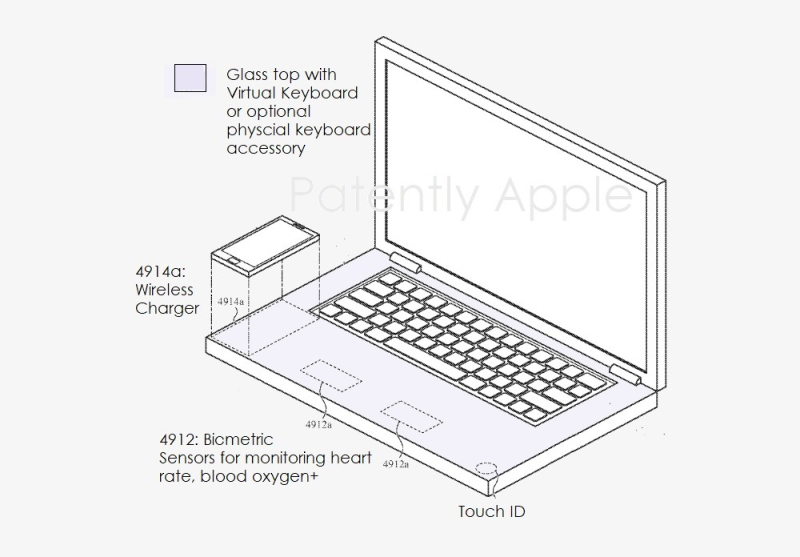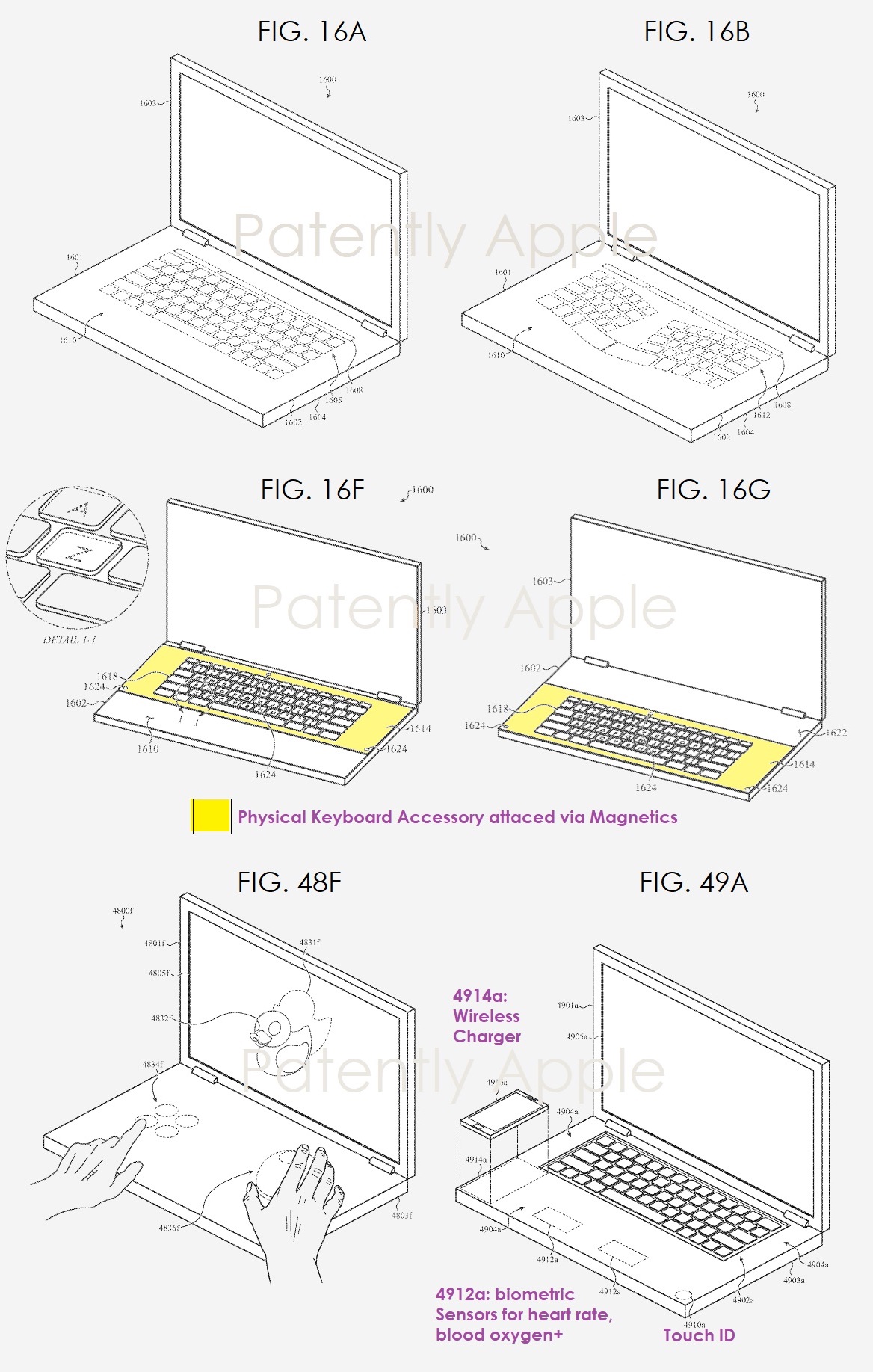A recently published patent application from Apple shows the future of MacBooks could be a dual-display foldable with a magnetic keyboard, which attaches to an all-glass base.
It’s quite a big move away from the company’s trademark aluminum unibody, but in doing so, it could unlock a lot of interesting new features, such as reverse wireless charging and even measuring your heart rate.

Seeing double
As spotted by Patently Apple, this patent dates back to 2018, but the 20 additional new claims show an interestingly versatile future to the MacBook lineup — one that starts with a glass top. Don’t worry, the company has not gone mad and decided to make an all-glass unibody construction.

What this does is enable three key things: reverse wireless charging (to keep the likes of your iPhone 14 or AirPods Pro 2 topped up), a dual display form factor (like the long-cancelled Microsoft Surface Neo), and what Apple is calling a “physical keyboard accessory attached via magnetics.”
Put simply, you can use it as a dual display machine when you don’t need a keyboard, but for proper laptop work, the option of a physical keyboard is available for you to magnetically attach to the bottom deck of the MacBook.
Other features touted by these patents with the help of a glass surface are a Touch ID sensor built into the bottom corner, alongside biometric sensors for heart rate and blood oxygen.
These last two have got me thinking: why on Earth do they need health data? After some reading, they could be used as a means to notify you about bad posture, as research shows your heart rate and blood pressure can be impacted.
Outlook
Of course, as is the case with any patent applications, it’s probably worth taking this news with a pinch of salt. While many patents do turn out to be close to the reality of what the company is making, sometimes it’s just to call “dibs” on a specific idea the R&D team had with no intention of producing it.
But it is fascinating to see how Apple is thinking, and also how close it is to the likes of the Surface Neo, along with foldables like the Asus Zenbook 17 Fold (without the flexible display). Maybe it is just a classic case of other companies doing it first, but Apple jumping into the fray just as the idea starts to get popular.
Either way, we’ve got far more laptops to come first before we see something like this — starting with the M2 Pro and M2 Max MacBook Pros, which are expected to arrive early next year.




